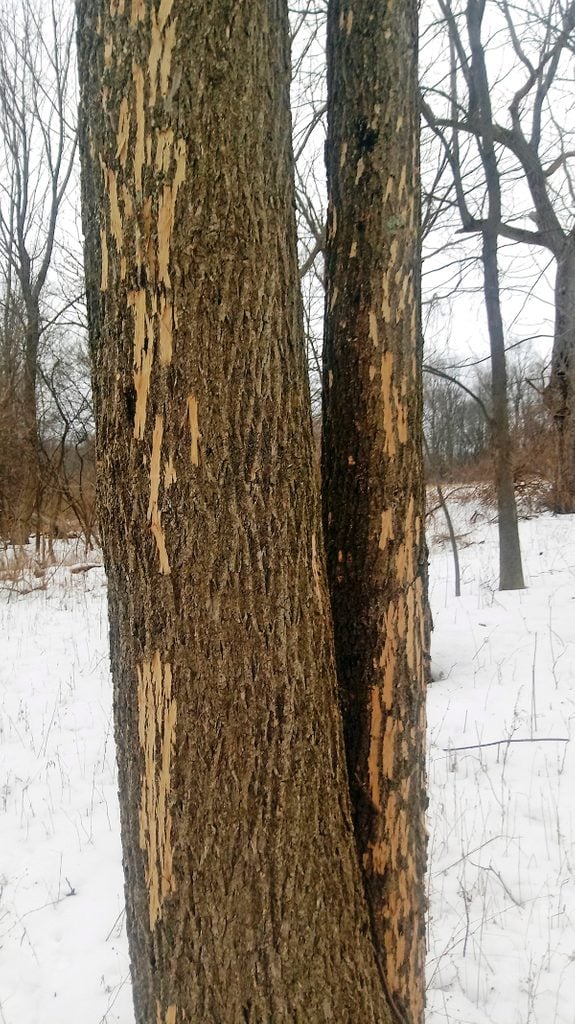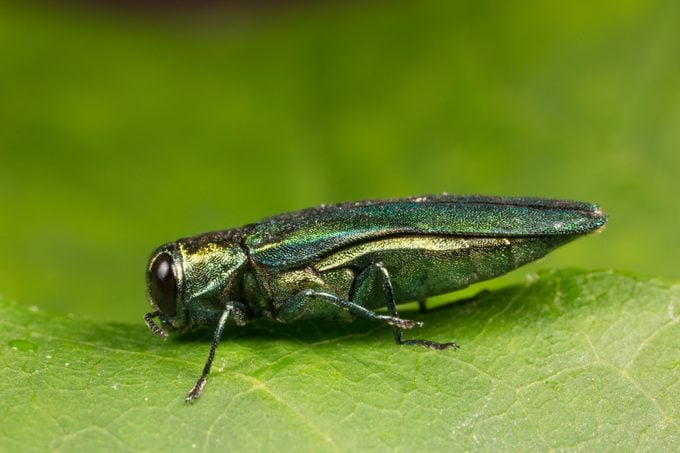How to Identify Emerald Ash Borer Damage
Updated: Dec. 08, 2022
The emerald ash borer is deadly to ash trees—and aggravating for homeowners. Here's how to know if your tree has emerald ash borer damage.
Since the early 2000s, the emerald ash borer has been a thorn in homeowners’ sides—or anyone with trees in their yard. These invasive insect pests cause oft-catastrophic damage to ash trees, and plenty of people have been forced to replace trees the borers killed. Here’s how to tell if the ash trees in your yard have emerald ash borer damage, and what types of trees you might consider replacing them with.
Psst—If you find a spotted lanternfly in your yard, this is what to do.
Emerald Ash Borer Damage

“Is this tree damage the work of a woodpecker?” asks Birds & Blooms reader Christine Atkins.
Birding experts Kenn and Kimberly respond, “Unfortunately, the marks displayed on your tree were not caused by a woodpecker or other bird. The tree appears to be an ash, and the damage is a good match for the “blonding” that results from emerald ash borers. (If you do have trouble with woodpecker damage, here’s how to stop them from pecking.)
“These beetles are native to Asia and have caused the destruction of millions of ash trees in North America. The bad news is that once the damage reaches this level, the tree will likely die. We suggest contacting your local extension office to confirm the presence of emerald ash borers and for information on removal,” the Kaufmans say.
The Arbor Day Foundation recommends monitoring your ash trees for these symptoms: thinning or dying crowns, suckers, splitting bark, tunneling under the bark and D-shaped exit holes.
Learn what you should do about 10 common tree diseases.
Replacing Damaged Ash Trees

“I lost a hedgerow of ash trees to Emerald ash borer damage. I was going to replace them with osage orange trees, but do you have any other hardwood recommendations? asks Birds & Blooms reader Lynn Taylor.
Garden expert Melinda Myers says, “Consider using a mix of trees. Creating diverse plantings reduces the risk of an insect or disease destroying all of the plants. Osage orange trees are durable beauties, but they do produce grapefruit-size fruit when mature. Hackberry grows 40 to 60 feet tall, has a vaselike habit and yellow fall color.
A variety of maples, including Miyabe and trident, have interesting bark and fall color. Turkish filbert tolerates drought, has an attractive pyramidal shape and produces edible fruit once it’s mature. Male clones (branch cuttings) of Amur cork tree, such as His Majesty, Macho and Shademaster, are adaptable, have corky bark and yellow-bronze fall color, and do not produce messy fruit.”
Next, learn how to control a Japanese beetle infestation.




















